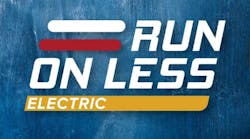At NACFE, we are big on learning lessons—whether that is from reports we are writing, conferences we are attending, or events we present like our Run on Less demonstrations.
When we decided to conduct Run on Less—Electric last fall, we did so because we thought the time was right to look at electric vehicles in commercial applications. The Run focused on four market segments—vans and step vans, medium-duty box trucks, terminal tractors, and heavy-duty regional haul tractors.
The big learning was that these market segments are a good fit for electrification, and we presented 10 key findings from the Run. And in the lead-up to the Run, during the Run itself, and in the process of analyzing the data from the Run, we learned a lot of other lessons.
We clustered those learnings into five broad categories:
- Charging
- Measurements
- Standards
- Operations
- Utilities
When it comes to charging, we learned that the energy drawn from the grid to the charger is going to be more than what the vehicle is receiving. Charger efficiency is important in estimating total energy demand. We also learned that opportunity charging can help extend the range of vehicles during a workshift. Multiple short periods of fast charging can supplement extended slower charging between shifts. Another takeaway was that a vehicle designed for a maximum power of 150 kW cannot charge at 350 kW level without risking damage.
Regarding measurements, we learned that it is important to validate what is actual measured data and wherein the vehicle it is measured. Fleets also need to identify where derived data is being reported and clarify what assumptions are built into those derivations. Each fleet also needs to determine what sampling rate it can afford and determine if that is sufficiently accurate for their purposes.
We also found that the terms “consumption” and “efficiency” can be confusing metrics and care needs to be taken to clarify how they are estimated. One of the gray areas with EVs surrounds maintenance. We don’t have enough real-world experience to know what the maintenance needs of these vehicles will be, but we did learn that measuring maintenance and downtime will require a long-term project—on the scale of months or perhaps years—to capture seasonal effects as well as to accrue sufficient mileage.
When it comes to standardization, we learned that the trucking industry could benefit from standardizing CBEV data buses and interfaces. We also learned that standards for reporting EV vehicle specifications need to be established to provide uniformity in reporting charge times, battery state of charge (SOC) levels, consumption kWh/mi baseline conditions, etc. We also think that SOC reading should be standardized across the industry to make things clear for drivers.
From an operational standpoint, Early adopters of CBEVs should choose duty cycles that reduce risks from range anxiety and should keep battery use above 50% SOC each shift in order to ensure success. Fleets also need to explicitly know their duty cycles, range requirements, dwell time, etc. Fleets should choose battery capacity and charging based on those duty cycles with some safety factors to account for the aging of the batteries. We also learned that fleets and OEMs need to specify CBEVs for four-season operations and road grades and account for extremes, not just nominal conditions, in sizing battery packs.
Finally, when it comes to utilities, fleets need to have a system perspective on electrifying a facility. Fleets should be aware that they may not always have a receptive contact at utilities with respect to electrifying their fleets. And while not ideal, sometimes they will have to start the process without utility support.
We share these findings and lessons learned to help fleets wherever they are in their electrification journey. You can find the first report on RoL-E here.
If you’re already deploying EVs, I’d love to hear about the lessons you learned. E-mail me at [email protected].
Michael Roeth has worked in the commercial vehicle industry for nearly 30 years, most recently as executive director of the North American Council for Freight Efficiency. He serves on the second National Academy of Sciences Committee on Technologies and Approaches for Reducing the Fuel Consumption of Medium and Heavy-Duty Vehicles and has held various positions in engineering, quality, sales, and plant management with Navistar and Behr/Cummins.




